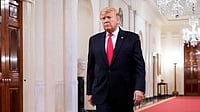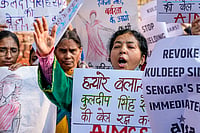But the hope that India can reach prosperity through manufactured exports received a boost in 2003-04. The current business cycle upswing which gathered steam that year was triggered by an industrial recovery beginning June 2002. From a 5.7 per cent growth rate in 2002-03, the index of industrial production went up by 7 per cent next fiscal, and has since then kept around 8 per cent. In all these years, manufacturing led growth, expanding at around 9 per cent.
Still, Indian industry is way behind its Chinese counterpart in terms of costs and productivity. Generally, retail prices of Chinese goods are 30 per cent lower despite comparable labour and other input costs. The latest Economic Survey finds no significant change in total factor productivity (so that we can produce more with less inputs) even in the high growth years. To achieve both these goals, industry needs to scale up operations. That’s difficult without a strong and growing domestic demand. Even in keeping costs low, India is hamstrung by factors like higher import duties, higher indirect taxes, sub-optimal levels of operations, lower operational efficiencies, higher transaction costs, lower labour productivity, higher cost of capital and inadequate infrastructure.
Studies have identified inadequate infrastructure, inefficient bureaucracy, corruption, restrictive labour regulations and tax rates as top five problems in doing business in India. The Kelkar task force had recommended a four-tier import duty structure in 2006-07: 5 per cent for basic raw materials, 8 per cent for intermediate goods, 10 per cent for finished goods other than consumer durables, and 20 per cent for consumer durables. By comparison, the peak duty today is 12.5 per cent. Ideally, when the base duty is zero, imported products should face duties equivalent to domestic indirect taxes. The countervailing duty (CVD) is meant to do this, but currently ignores state-level sales tax and other local levies. The 2006-07 budget has a provision for an additional 4 per cent CVD with a few exceptions. But this gets linked with reform of the domestic indirect tax system. An alternative would be VAT on all imports.
Domestic indirect taxes are often singled out as a major reason why Indian manufacturing isn’t competitive. Studies argue that total taxes on manufactured goods are 25-30 per cent of the retail price in India, compared to 15 per cent in China. Future directions for indirect tax reform could include termination of all exemptions over a period of time, and imposition of an all-India goods and service tax with service sector taxation integrated into the VAT framework instead of being a tax on turnover. In the short term, it may be better to implement a national parallel VAT both at the centre and the states.
The cost of credit is another major issue. The real rate of interest averages 5-6 per cent at present. In a capital-scarce country, real interest rates may never be as low as global rates but parts of the corporate sector are now allowed to borrow small amounts globally. The trend of declining public expenditure in infrastructure creation should reverse. Recently, there’s speedier development in sectors like telecom, ports and roads. To encourage private involvement, we have new sectoral guidelines, including model concessionary agreements for roads and ports, and a special purpose vehicle (SPV) to plug the gap in long-term financing. The SPV would borrow domestically with government guarantee to finance commercially viable projects with private participation. Better regulatory practices, including independent regulators, is key to increasing private participation. Financial reforms are needed to expand investor base, and develop long-term corporate debt markets.
Future policy changes then should have these goals: encourage a global scale of operations, enable financial institutions to finance such projects, attract large-scale investment, help companies—small and medium ones in particular—in risk management and debt restructuring, and catalyse modern technologies to improve competitiveness. It would also look at special areas where there has been consistent high growth like steel, cement, petrochem, auto, textiles, gems and jewellery, pharma and electronic goods and computers. Some of them have shown very high exports and still hold huge potential considering rising global demand.
Hardening interest rates hold out a dampener for the future industrial outlook. The current fiscal has seen a slowdown in growth after years of high speed—partly due to electricity sector growth that refuses to perk up and partly due to manufacturing losing steam. Even FDI flows show no vital signs of picking up; India still gets less than a per cent of global FDI flows compared to almost 10 per cent of that going to China. Some of the action here is choked by the companies’ lack of flexibility in reducing the size of operations, especially labour. Public sector operations too continue to be hamstrung by lack of clear policy and independence of management. While FM P. Chidambaram pins hope on interest rates, both on labour and FDI, the ball is now in the court of state governments.
(This article is based on an ICRA analysis prepared for Outlook.)


























